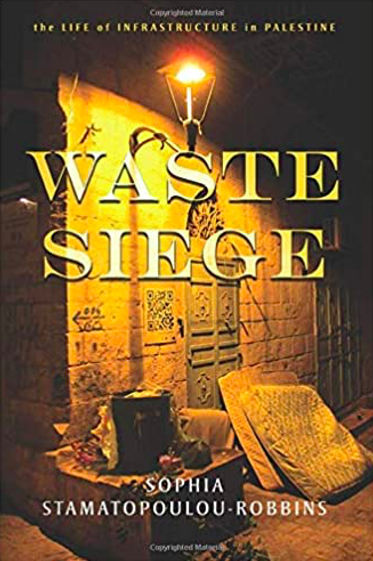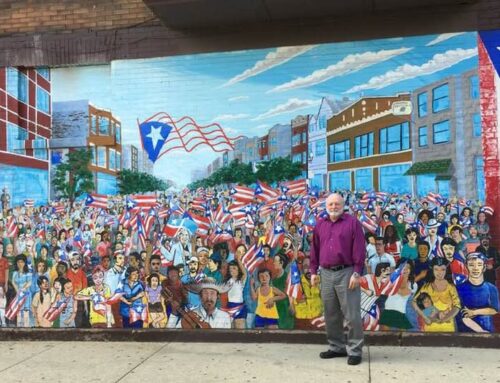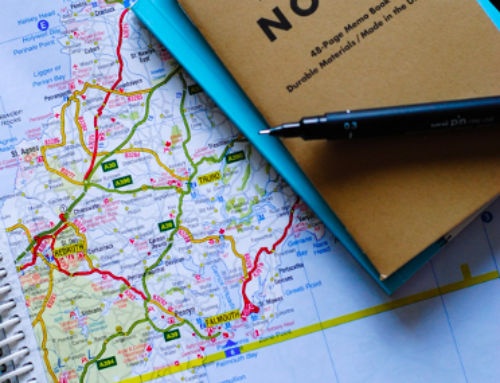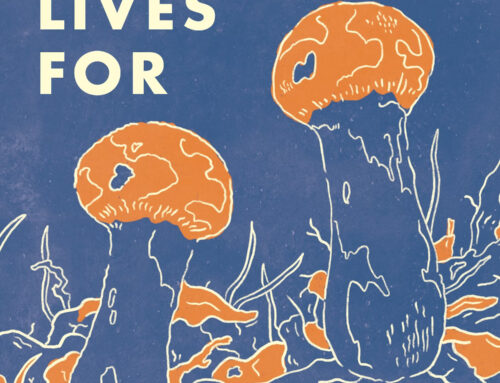by Melanie Ford Lemus and Sophia Stamatopoulou-Robbins
Melanie Ford Lemus, AES editorial intern and graduate student at Rice University, interviews Sophia Stamatopoulou-Robbins, associate professor of anthropology at Bard College, about her prize-winning book Waste Siege: The Life of Infrastructure in Palestine, published by Stanford University Press (2019).
This conversation touches upon the spatial politics and practices of occupation, infrastructure as performative assemblages, shared environments and their public constitutions.

Melanie Ford Lemus (MFL): Before we get started, can you talk about how you made your way to Palestine and how you found yourself thinking about waste? How did you come to this project?
Sophia Stamatopoulou-Robbins (SSR): I was taking a class in my second year of graduate school. It was [Partha] Chatterjee’s class on Power and Hegemony. The class was an extended reading of Foucault and Gramsci. I wrote a paper that was trying to understand what infrastructure had to do with Hamas’ coming to power in 2006, in those elections that were just under a year old by that point. I got interested in infrastructure in Palestine in part because there had been a fair amount of commentary on the Left and Center in the West arguing that Hamas had been elected for pragmatic infrastructure and social welfare reasons without ideological commitment to Islamism among Palestinians. I say this because I think Left-leaning and Centrist Western commentators are sometimes committed to Palestinians being secular, and they did not want to see Hamas’ victory as a sign that people are shifting in the direction of what they feared was fundamentalism. So, they pointed to infrastructure, and they said things like the Palestinian Authority (PA), which had been led by Fatah until then, had failed to provide these basic services and infrastructures and that people had simply voted for [Hamas] for that reason. And that just struck me as a simplified way of thinking about how people in a place that have histories of stateness would hold others accountable for infrastructure. Even the idea that a government should provide waste management could not be assumed at the outset. So, that created a question for me: How do people in a non-sovereign condition manage wastes at different scales?
MFL: In your title Waste Siege, siege is a scalar, spatial but mostly visceral word for life in Palestine. It demonstrates the bureaucratic and authoritative constraints under which, as you write, Palestinians in Israeli occupied territory must live “in the absence of an indigenous state (Palestine) and under the hostile military presence of another (Israel)” (3). These constraints reveal that active siege should be both a political strategy as much as a material discomfort, as you evidence in waste management solutions like landfills and their exponential accumulation and expansion logics (Chapter 1). So, how did you first come to think about siege as an analytic in your work and what does it mean to you today?
SSR: I was really struggling to figure out what the center of the book was. I could see that waste was burdensome, but I was having a hard time with what kind of argument I could make about waste that was going to offer a fresh perspective on it. How were we going to understand waste differently through Palestine? I wanted people who care about waste in general to care about this book. I remember reading the back of Lori Allen’s book, The Rise and Fall of Human Rights: Cynicism and Politics in Occupied Palestine. She periodizes occupied Palestinians’ experiences in that book. She says that up to a certain point, human rights had been a salient feature of the everyday but then people had sort of developed a cynicism in Palestine over time that had caused it to fall, let’s say. I suddenly realized that my book was also a periodization and I wanted to name what this period was.
Initially, it was a temporal thought that led me to thinking about what most characterizes this moment. I realized that there is a particular set of conditions shaped by waste. Then I thought of the word siege because I realized the profound circularity of what was really happening for people in relation to waste. Each time they did something to mitigate their burdens produced by a particular type of waste, the waste came back somehow or the burdensomeness came back in a different form. That inescapability raised the question of siege for me. I thought it was helpful partly because occupation in Palestine is so often rightly understood as a spatial incarceration that is siege-like. Within [Palestine] there have also been sieges like the Siege of Nablus or the Siege of Jenin during the second intifada, for example. The word siege suggests overlap with occupation, partly conceptually but also in showing how there are overlapping, not always perfectly, challenges to Palestinian life that are also siege-like and made possible by occupation but that cannot be reduced to it. It is funny because sometimes, I think for less careful readers, the book is read as, “isn’t this a story of how waste siege is the latest tool of occupation?” And, yes, in some ways it is. But it also is about how capitalism inserts itself into Palestine to produce another kind of siege, how certain kinds of material accumulations are siege-like.I also want to say that [siege] came out of conversations with some of my favorite people to talk to. I am in two writing groups—I recommend it by the way—and in fact Kali Rubaii was the one who said you need to think more about what a siege is in a military circumstance to really show how a waste siege has different features. So, even though this is not the center of the book, I hope that it is also helping us think in more complicated ways about what a siege is. That a siege is also your inability to stem the flows that come out of your space, and that is because of environmental politics. That is because of the way that pollution and accountability work today. It can be besieging to not be able to control the flow upward and that is a different way of thinking of siege that is both spatial and about the total lack of control over something.
MFL: Right. So, in thinking about infrastructures as kind of things that bring on siege, the anthropology of infrastructure has tended to focus on how infrastructures are reinforcements and extensions of state authority. However, in many respects your work shows that there is much to be learned from examining experiences with infrastructure and regions where state authority doesn’t exist or there is a denial thereof. In the case of Palestine, the implementation and quality of waste infrastructure is intimately bound to nation building projects, rather than nation sustaining projects, for example. The notion that centralized services and the creation of functioning public goods is a necessary step towards sovereignty from Israeli occupation is palpable for some of your Palestinian interlocutors who really believe, to some extent, that putting infrastructure and laying down this kind of work is one way to obtain some sort of legitimacy. Can you expand on this attention to infrastructural power in relation to nation building projects, specifically?
SSR: Let me start by saying that I am not sure I buy the distinction between the building and the sustaining [of nation-states]. Scholars who work on infrastructure in what we would call already built nation-states would probably argue that [infrastructures] are the sites for reproduction, always making something that could not be there or that could fall away. Maybe we want to think more in terms of futurity; that the landfills and the wastewater treatment plants that were being designed and built by the Palestinian Authority (PA) were designed to make a state for an existing nation, so they were designed to lay the groundwork for the nation to have sovereign operations.I think what is also interesting, and that I talk about in the third chapter about Shuqba and the dumping sites there, is that irrespective of whether projects came to fruition or whether waste was going to seem to be properly managed, the presence and the activities of the PA to orient itself towards issues of waste management created a matter-of-fact sense, which I try to describe for people: that we already have a state. This struck me so much because it is in the face of constant failure and neglect. Even the failure of infrastructure sustained a sense of being governed and reorients people’s energies away from the main actor depriving them of their sovereignty (which is Israel) toward this failed body that doesn’t build infrastructures but that should. The PA can have authority without legitimacy but also without coercion. This is a moment in which the materiality of infrastructures seems to matter less. You could argue that people in a village like Shuqba know that the PA does build landfills elsewhere and that explains partly why Shuqbans would expect work to be done where they are too. But that wasn’t how my Shuqba interlocutors articulated it to me. No one ever said, “look they’re doing this in Jenin,” perhaps also because Shuqbans did not necessarily want a landfill.
What I will say is that paying attention to the biographies and forms of expertise of people like PA engineers who occupy a kind of subaltern elite status allows you to see the disconnect between what they know, where they circulate as professionals, and the infrastructures they produce. It detaches them a bit from the infrastructure. Often when we read infrastructure stories there is a sense that the engineers are enthusiastic across the board about what they are building, like they are at the forefront of modernizing. Here, I tried to pay attention to engineers’ subjectivities and to the way they had to negotiate putting off the modernization of Palestine. A key argument in the chapter about landfills is that [the project of building and implementing landfills] generated its own temporality. For the building of backward landfills to be considered a reasonable act, they had to inhabit a continuous present on a continuous loop, without a future—a temporality I called landfill time. I was interested in the way that, through infrastructure, [engineers] were on the one hand aiming to build the future, to make the future now, by building the state that is not yet here, and on the other hand deferring the future that they might want.
MFL: Waste Siege is an ethnography that sits at the intersection of environmental studies and studies of colonial expansion. Waste in this context emerges as an environmental concern, but not one concerned with neocolonial conservation or restoration efforts. Rather, as you highlight, the management of waste is deemed an environmental concern insofar that it is understood as an indication of public health and good governance, even if the material and economic resources to fulfill such requirements are sieged by the evaluating institutions or, in this case, occupying state. Different discourses and attitudes towards a “shared environment” (176) make for incommensurate environmental imaginaries, like with sewage management (Chapter 5). What were some of the difficulties you encountered in parsing out and writing about environmental imaginaries and the shared environment?
SSR: The challenge that drove my writing about the shared environment was that the environment occupied this position of the unqualified good. It was a good that must be protected and that no one could speak against. Yet at the same time, the environment was being defined in such a particular way that erased the matter of colonialism entirely. Palestinians who were in positions to represent Palestinian views of environmental custodianship had to show deference toward this definition of the environment that erased their colonial condition. I realized how powerful the framing of the environment was starting in the 1990s. This was a period during which Israeli and Palestinian leaders cast all of Israel and the West Bank and Gaza as one single environment that was shared by all the humans who were on that territory. What is challenging for an anthropologist who pays attention to materiality is that this framing is not wrong in some sense. The anthropocenic view that thinks in terms of the human species is similar. It sees humans occupying space and doing damage and using resources. It frames the planet as something all humans, indeed all earthly species, share. And even if [anthropologists] might say that the responsibility falls on different people differently, and should say that because of power differentials, it was strange to realize how politically problematic that same framing of sharedness was in the case of Israel-Palestine. It naturalized a sense of ownership by Israelis over all territories in Israel-Palestine, bypassing the question of justice entirely. I was interested to see how Palestinian Authority bureaucrats dealt with the same conundrum that I had about the environment being both shared and a matter of possession; how they could hold those two problems together. Perhaps I never came up with an answer other than to say it was possible for them to live in both realities at the same time. And that, in a way, being Palestinian and caring about ecological futures is to live in an incoherent subject position.
MFL: Staying with this idea of the shared environment, I wanted to ask you a question about publics and commons. While Palestine’s landscape remains economically and spatially constrained, the circulation of goods and discard within the walled peripheries continued in other manners such as with the commonplace hanging of old bread throughout opportunistic city installations like telephone poles or gates (Chapter 4). Consequently, what is generally understood to be stagnant and indifferent public space becomes infrastructure by way of its participation in the reception and movement of certain objects, whose values are culturally and historically significant and collective. How has this insight challenged your understanding of publics, including public space, goods, services, and materials?
SSR: Well, what is great about that question is that I had written the first versions of that chapter as meditations on publics in Palestine. Most people who had read that and knew something about publics, like in literature and politics, had rejected the idea that we were seeing publics [in that chapter of my ethnography]. They were thinking about Michael Warner’s work. I initially resisted until I workshopped it enough that I was convinced by the idea. I came to a different conclusion. This had to do with the latent commons, drawing on Anna Tsing’s idea. I was attracted to the idea of publics initially because there is a kind of gathering of strangers through this practice of placing bread outside that is anonymous and can be brought about by attention to the bread as you pass on the street, even if it is kind of passive. Warner makes the argument that if you are vacuuming and watching television, the TV is only partly in your attention field, but you nevertheless are brought into the public for as long as the TV is on, let’s say. I thought: That sounds like the bread in a way, right? For the people who walk around and have a sense of it, even if they are not the same people who want to go over to it and use it.
What is different about the latent commons is the potential for being hailed created by these bread deposits, and also the way that they do not have anything to do with speech or text or representation. Bread is read like text on a landscape, as a sign that tells a story of someone having felt something that they had to express or get off their chest somehow. The de-centeredness of bread deposits is also interesting, unlike a public being formed through a novel or a newspaper or a television show. These are all publics that radiate out from a center that intends for something to come from that [process], and these practices of depositing bread share a sensibility. But they also are fragmented and could create smaller pockets of the sense of the commons, or not.The bread stories were not in the dissertation at all, they came out of my later research experience. I had been avoiding the classic question that foreigners had about Palestine, which had to do with public space being a space of indifference. Foreigners would encounter public spaces and say, “look, Palestinians are occupied. They cannot possibly care about a shared space that is not theirs because they always feel that someone else is in control of it.” I was always offended by that comment, but I could not parse why exactly. It was selective in its reading of these spaces. It was reading the gum wrapper on the ground instead of reading the bread on the telephone pole. I think bread is not a sign of caring for the space as much as it is a sign that there are intimate uses of the space that assume others care, and care about something in a shared way. In outdoor markets, people would leave their wares outdoors overnight, like watermelons and knick-knacks . They might put a cloth over them and go home. These are other indications of how public space can be intimate as well as a kind of commons expressed through respect for others’ property.
MFL: The conclusion to Waste Siege invites readers to reconsider waste as “an environment within which people make their lives” (216). In this sense, waste is an ever-occurring and ever-present subject with no finite solution nor definition. What are the stakes for environmental studies in this renewed orientation of waste as environment in and of itself, rather than a byproduct of it? Or really, this is an open space for anything else that you would like to talk about that you felt was pertinent in the book that I haven’t asked about.
SSR: I was thinking throughout the writing of this book about the way that waste is a kind of unmarked yet fundamental tool for defining what the environment is. We have broken down the nature/culture divide very well through terms like the built environment, and nature/culture. Despite those helpful conceptual turns, however, contamination, waste and toxicity are pretty solidly still perceived to be impinging materialities upon the environment. I was surprised by that and really drawn to the work of people like Joe Masco and others who think about mutant ecologies, which have complicated that idea. Stories of toxic dumping are something that anthropologists increasingly care about when thinking about environmental justice. They present what a factory produces as not environment per se but as the damaging output of humankind; many of these stories suggest that there is nothing natural about waste and that is one of the reasons we are so mad about it.Yet, I was looking at waste instead through the finitude of the West Bank and the circularity that waste siege entails. It is almost like an enforced, dystopian version of a circular economy. Waste is not something that sometimes appears and then goes away. Something called “the environment” cannot be cleansed of it. Waste is perpetually present. I realized that it does not make sense to think in terms of something that is the environment against which waste offends. I think that my framing, which ultimately treats waste siege as an ecology, does weird things. It challenges how we talk about environmental justice. What if we start from a point of assuming the pollutedness of everything? Then maybe we would think more specifically about degrees of harm, for example, rather than thinking in terms of harm or no harm. Then, if we think about degrees of harm, maybe we produce a different accounting of tolerable harm. The work of people like Shannon Cram on nuclear radiation is interesting because they think about dosages. They also think about the accumulation of radiation in the body because it never goes away. What lifetime dose is acceptable has become a bureaucratic question for nuclear reactor managers, like the EPA for example. I think acknowledging the totality of harm begins a conversation about dose as a planetary question.
Cite As: Ford Lemus, Melanie and Sophia Stamatopoulou-Robbins. 2022. “Sophia Stamatopoulou-Robbins | Winner of the Sharon Stephens Prize for her book Waste Siege: The Life of Infrastructure in Palestine” American Ethnologist website, 16 June 2022 [https://americanethnologist.org/features/interviews/sophia-stamatopoulou-robbins-winner-of-the-sharon-stephens-prize-for-her-book-waste-siege-the-life-of-infrastructure-in-palestine]




